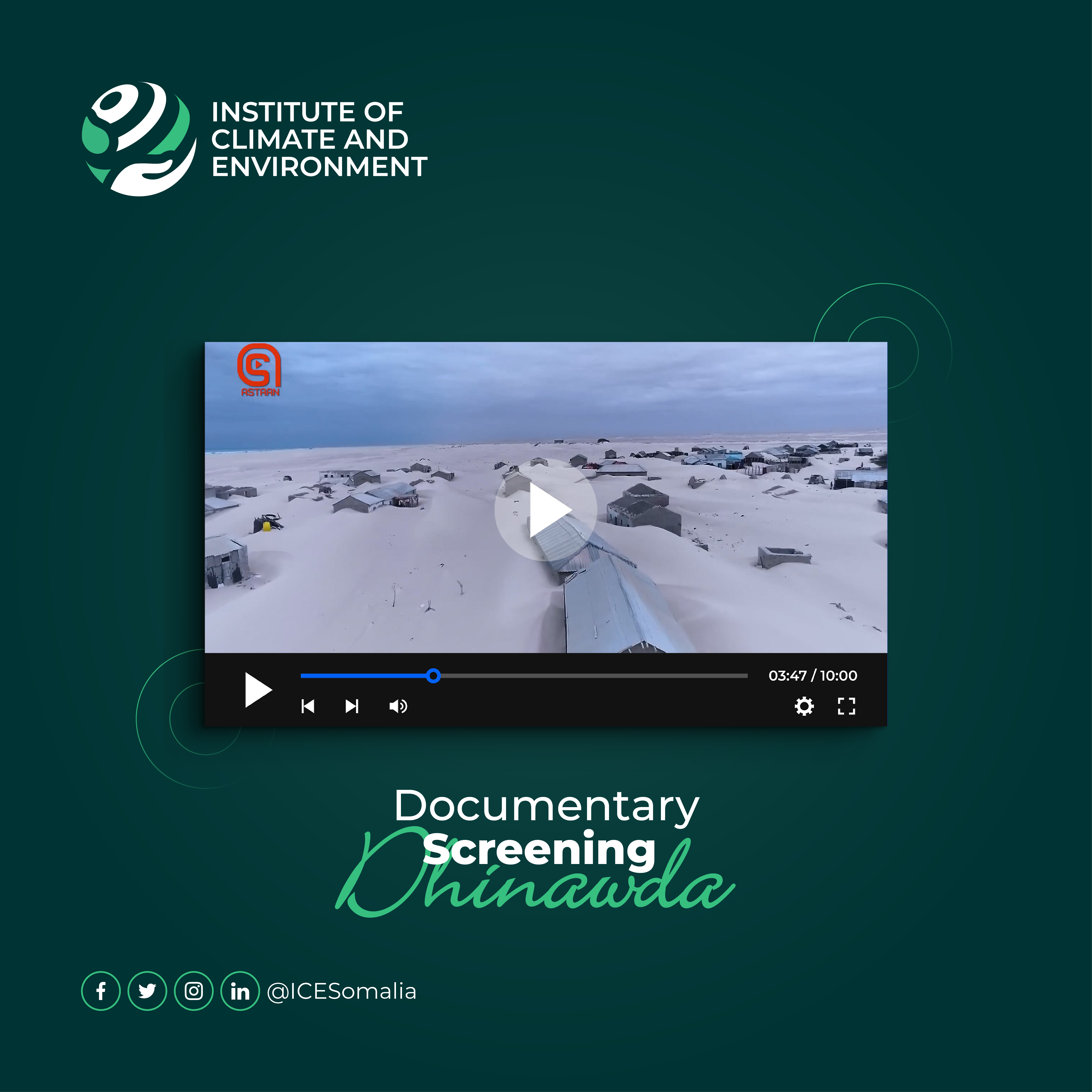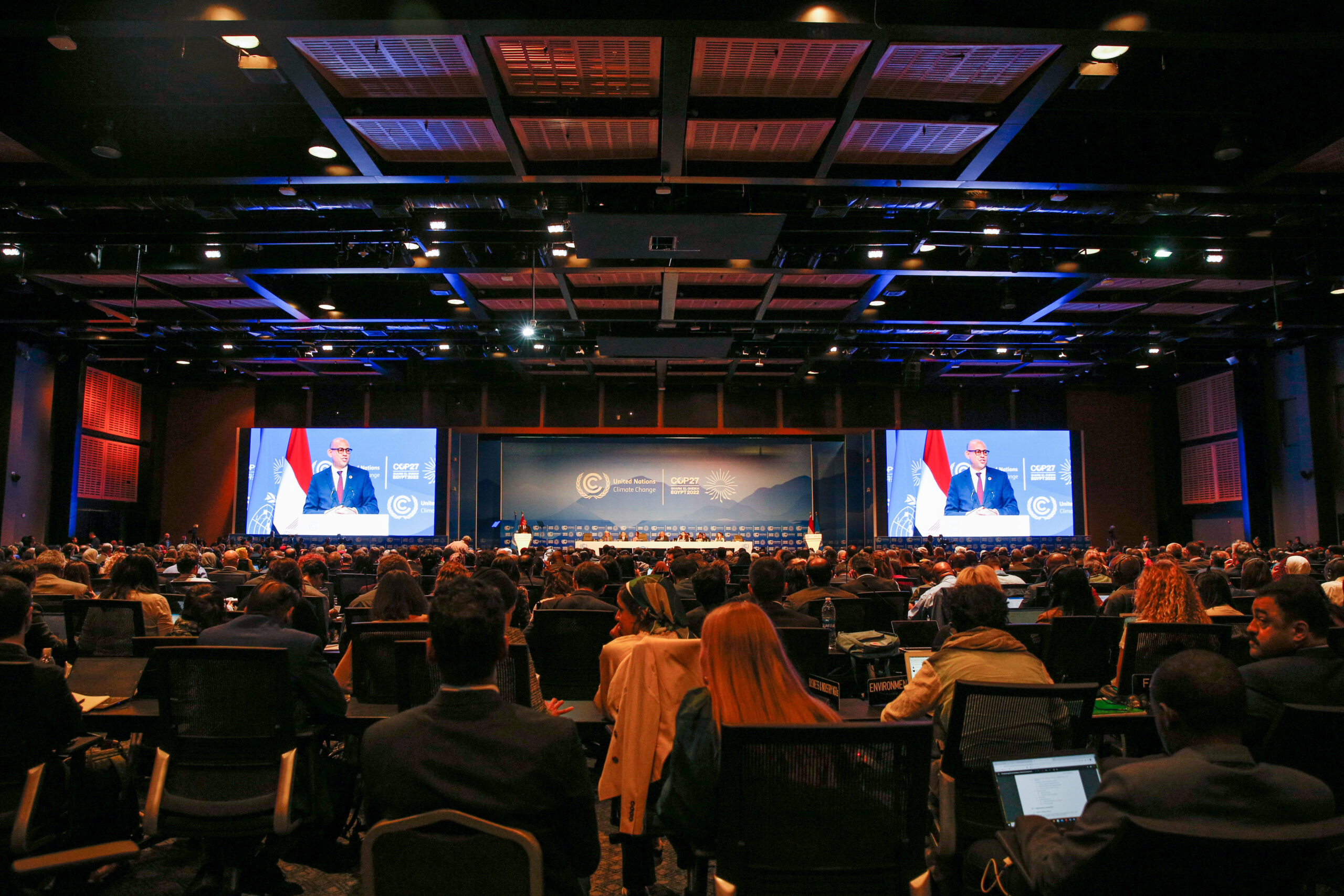
Dhinawda, a city buried by sand dunes
As part of our awareness-raising efforts among the youth to challenge their mindset regarding climate change. We hosted a documentary screening of “Dhinawde”, on July 20th. Over 50 attendees gathered including the director. “Dhinawde” documentary is an emotionally charged portrayal of a village caught in the clutches of an unforgiving climate crisis and a haunting scream of the villagers echoing through the vast expanse of sand dunes.
This compelling documentary, produced by Utaad Omar Ali Basha produced on August 16th 2022, aimed to raise awareness about the dire consequences of environmental degradation, urging the world to unite in the fight against climate change. Dhinawde has become a victim of sand dunes or desertification, pushing its very existence to the brink where the sand covers and engulfs the entire village, rendering it uninhabitable and effectively wiping it off the map. The film highlights the impact of these calamities on the village’s inhabitants and their daily struggle for survival.
As the film unfolded, breathtaking aerial shots depicted the haunting sight of sand devouring the once-thriving village of Dhinawde. Nature’s fury consumed everything in its path, from schools, houses, and the village market to the only health care centre. Then delve deep into the lives of the people living in the eponymous village. And captured the stark reality of their daily struggle for survival as they face an unprecedented environmental crisis and struggle with the scarcity of water and food, pushing the villagers to their limits, and leaving them to battle adversity each day.
One of the most heart-wrenching consequences of this climate crisis in Dhinawde was the closure of the health care center, which has adversely affected women, particularly those giving birth. The nearest medical facility is now a two-hour drive away in Galkayo. With no options for medical care during childbirth, women face immense difficulties reaching the help they desperately need and that touched me the most. The additional burden of transportation costs further exacerbates the plight, with affordability becoming an insurmountable obstacle for most, this compounds women’s vulnerability.
The director Cumar Cali Baasha contemplated his documentary journey deeply upon learning about the dire state of Dhinawde when his colleague that was from Dhinawde told him about the calamity of the situation of this village that was profoundly impacted by encroaching sand dunes and the plea for help of its people. He embarked on a mission to document their story and challenges. Recounting his initial arrival at Dhinawde, he found the landscape eerily unseeable, a far cry from the village he had anticipated. The distressing scenes depicted in the documentary unveiled a heartbreaking reality: homes, schools, and healthcare centers buried by relentless sands until they vanished from sight. Cumar candidly shared the struggle he faced while navigating the village, revealing that even short distances became laborious due to the sand, turning each step into a battle. His motive of the documentary was to emphasize the urgency of the situation, stressing that Dhinawde’ s story is a call to action for us all. He expressed his hope that the documentary would inspire viewers to take steps to protect the environment and the vulnerable communities facing the consequences of climate change.
Dhinawde not only portrays the devastation and challenges faced by the villagers but also isa plea for help as Dhinawde may be swiped of the map by the sand, The documentary captures the cries for assistance, the yearning of the villagers for someone to hear their story, and their hope that the world will take notice of their plight.
Amid this grim situation as the documentary leaves a lasting impact on us through vivid imagery and emotive storytelling, the documentary was as a clarion call to us as younger generation, urging us to be cognizant of the catastrophic impact of climate change. During the Q&A session, some participants asked questions about how they could contribute to addressing the crisis of climate change. Some thought of ways to support the affected villagers directly, while others explored avenues for raising awareness and advocating for sustainable practices in their communities. The emotions were expressing sorrow for the people of Dhinawde and admiring the resilience and determination to survive in the face of such adversity. Through powerful visuals and stories, “Dhinawde” ignites a sense of urgency in us to actively participate in mitigating climate change. As Jumana expressed, “Their story touched my heart, and I now feel compelled to help.”
Dhinawde is not just a documentary; it is a call to action, a compels for youth to be conscious of their environment and embrace sustainable practices. The documentary implores us to protect our environment and safeguard the lives and futures of those who bear the brunt of our planet’s vulnerability. Only by standing together we create a sustainable and resilient world for generations to come.







